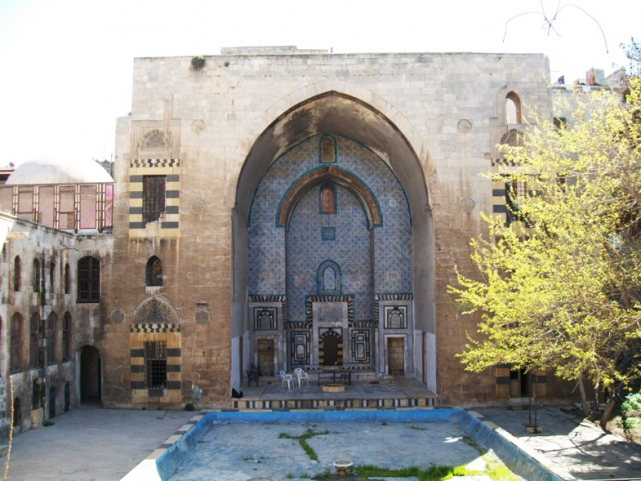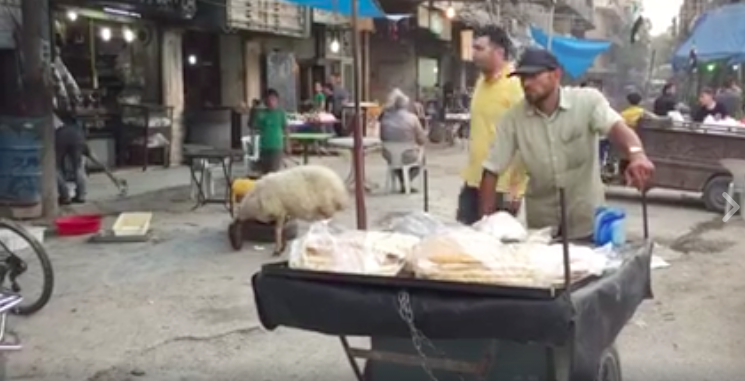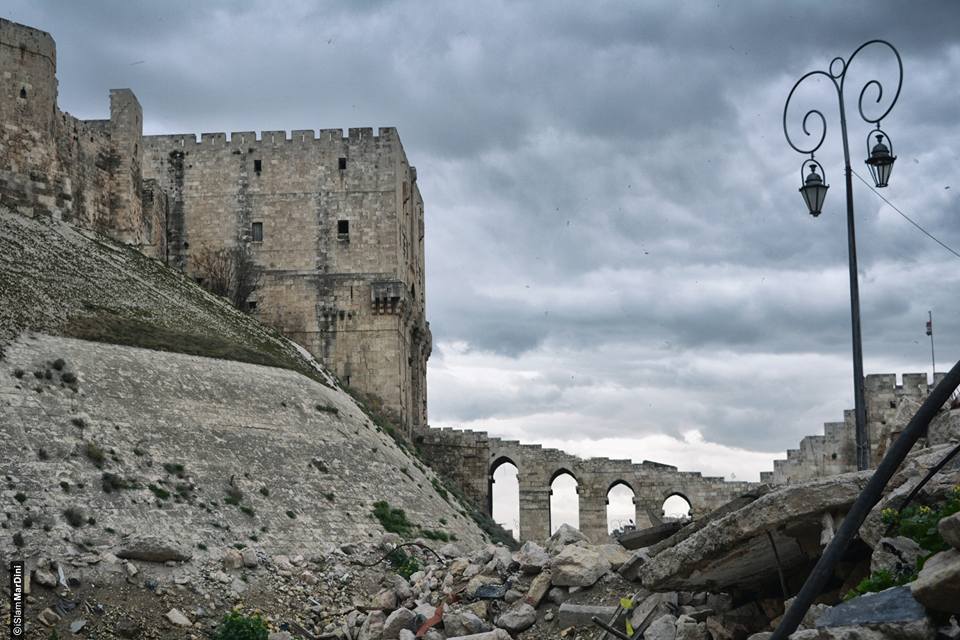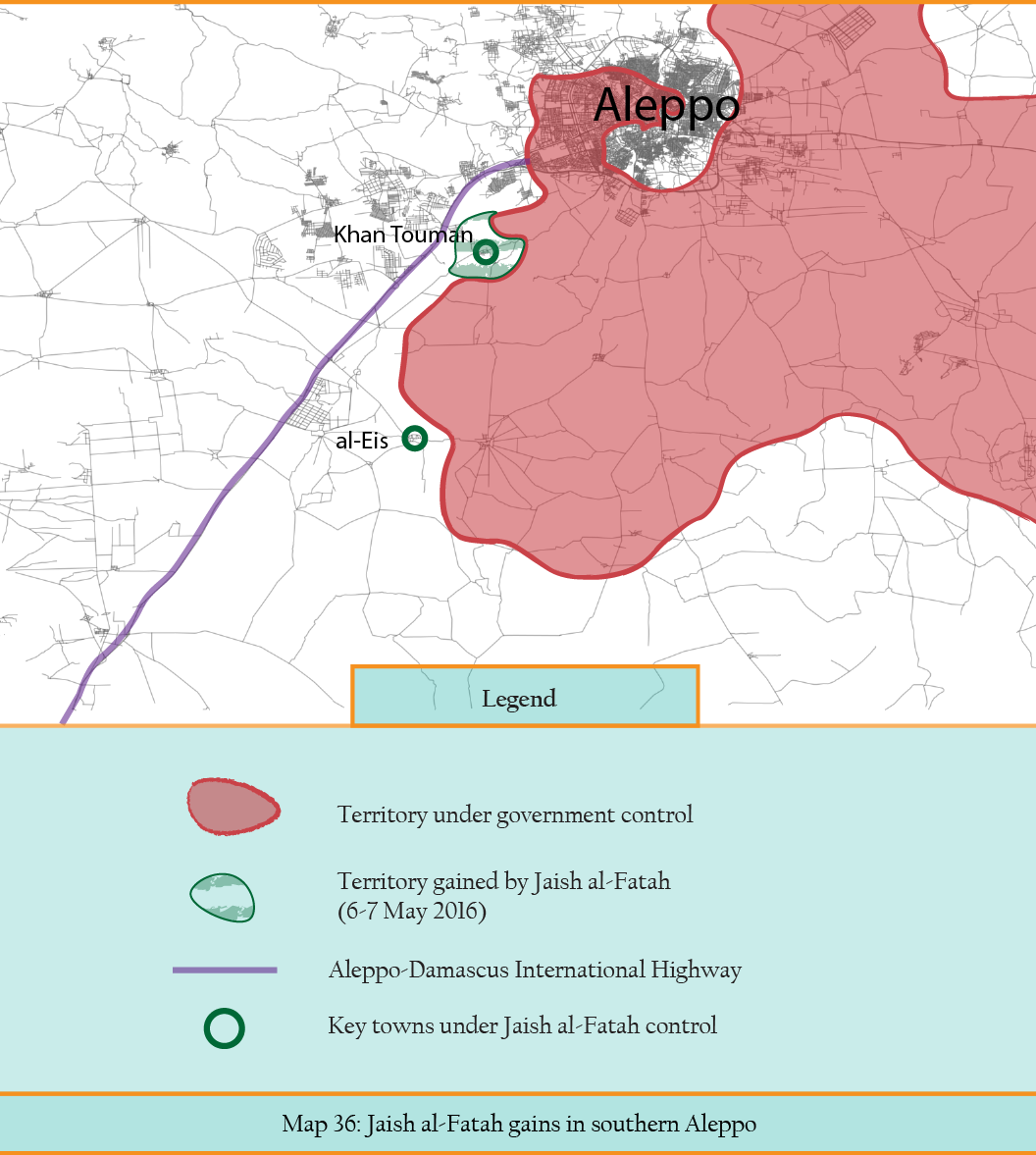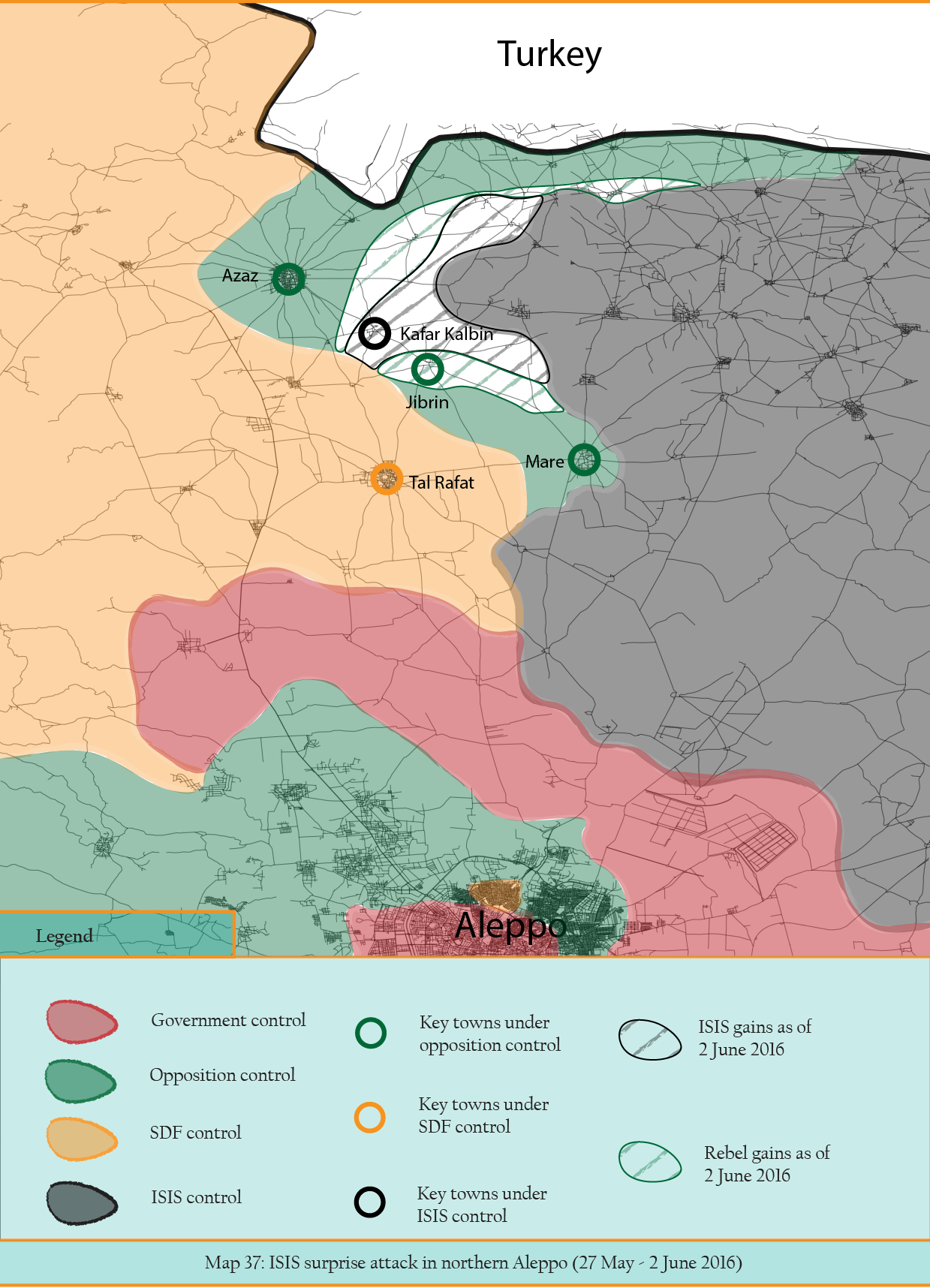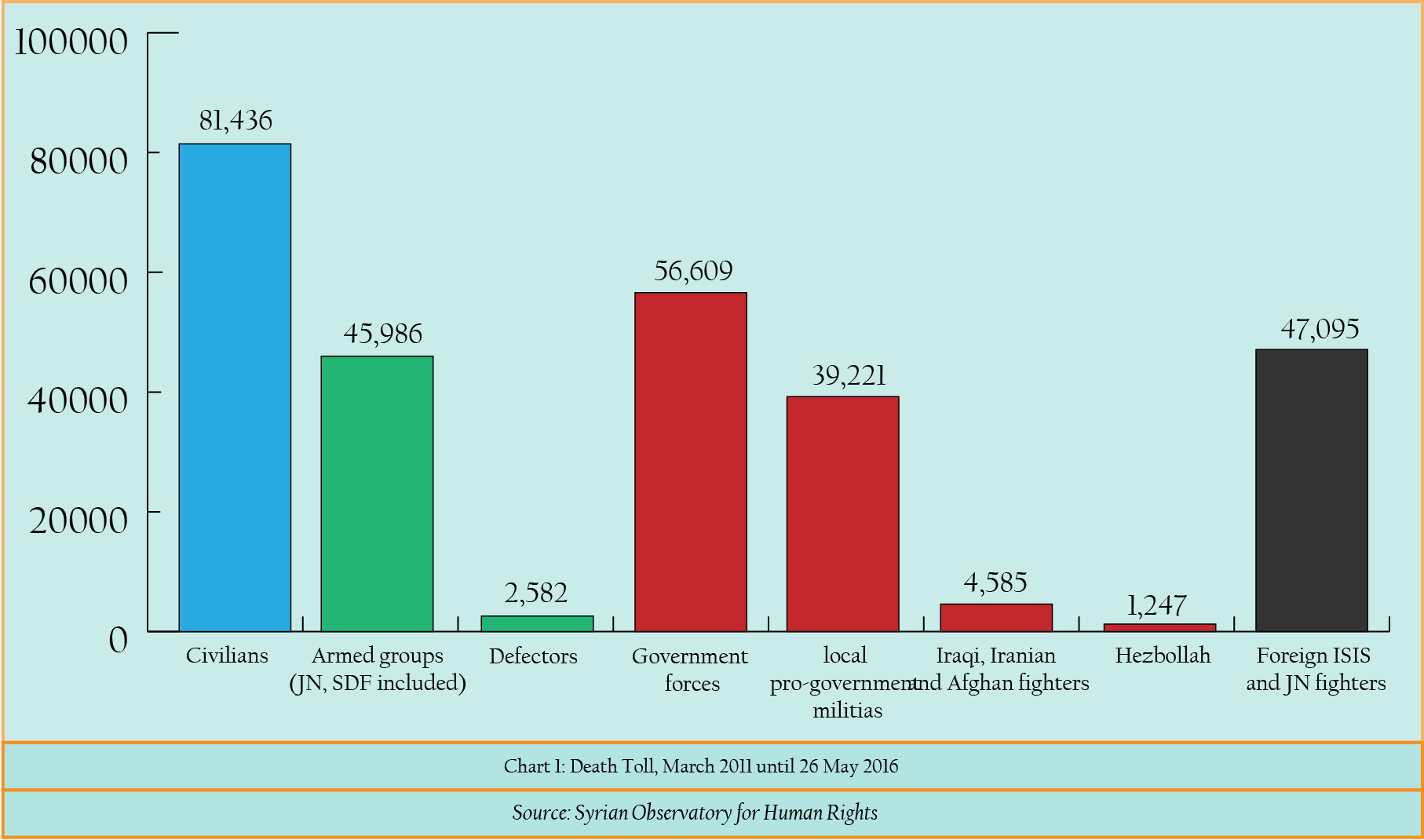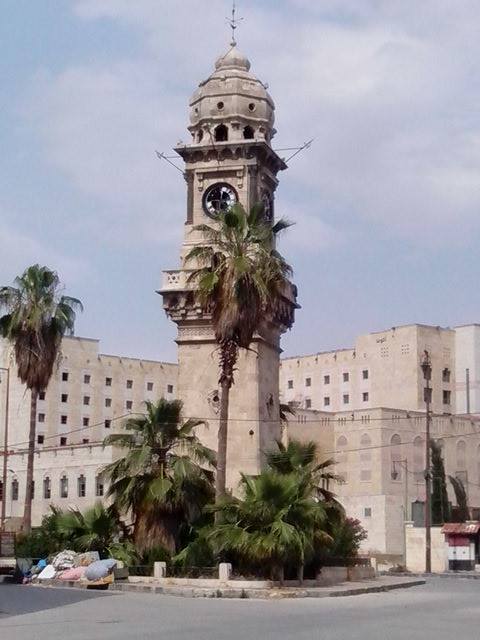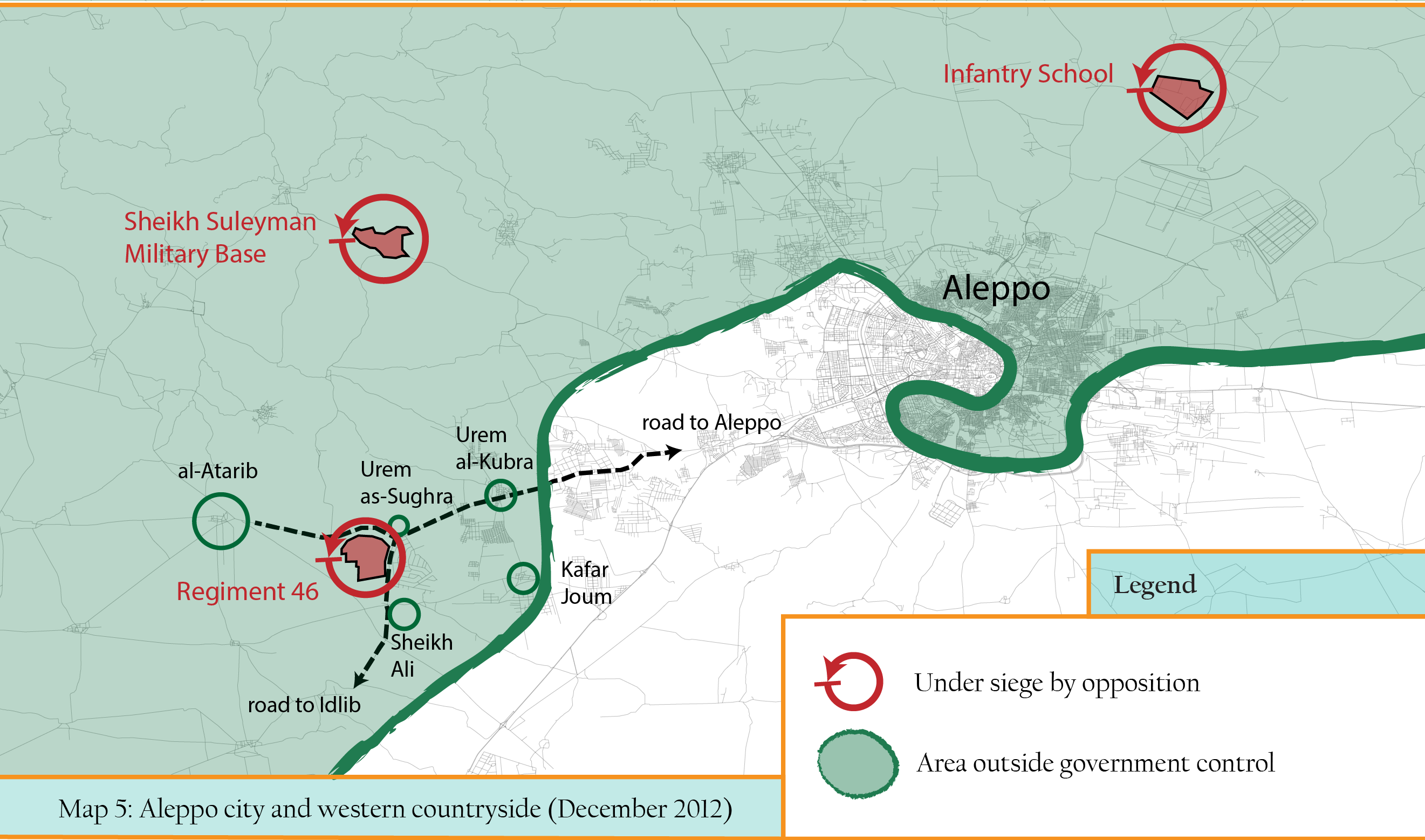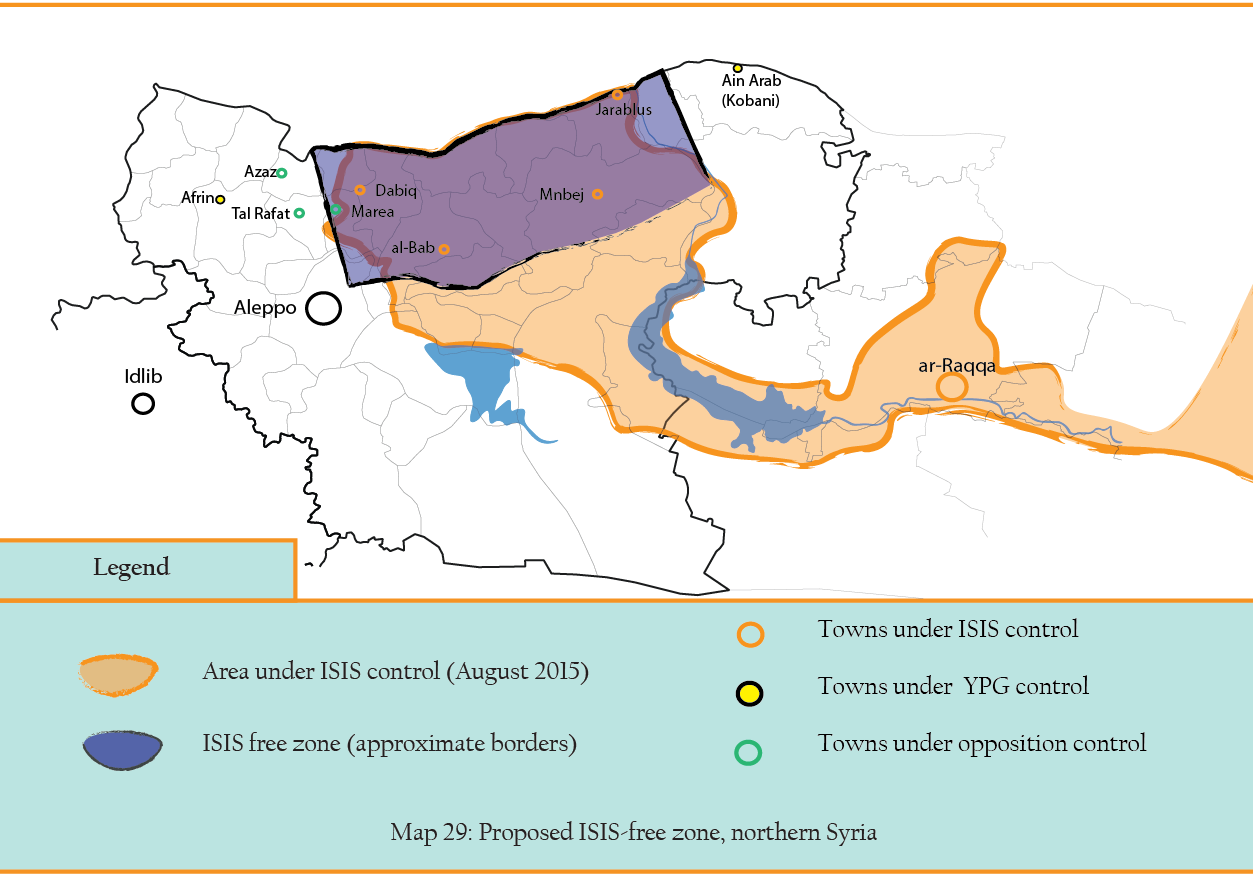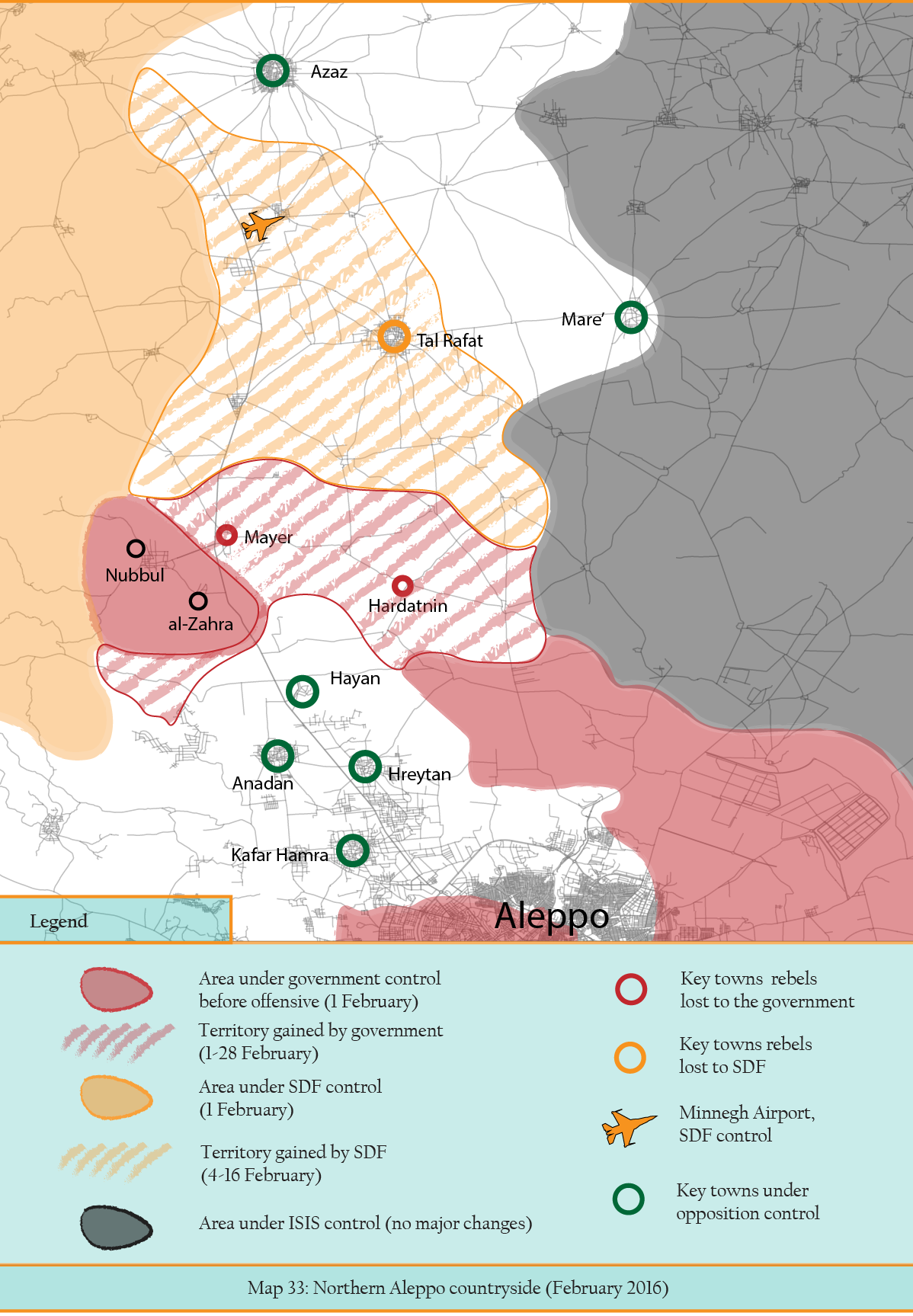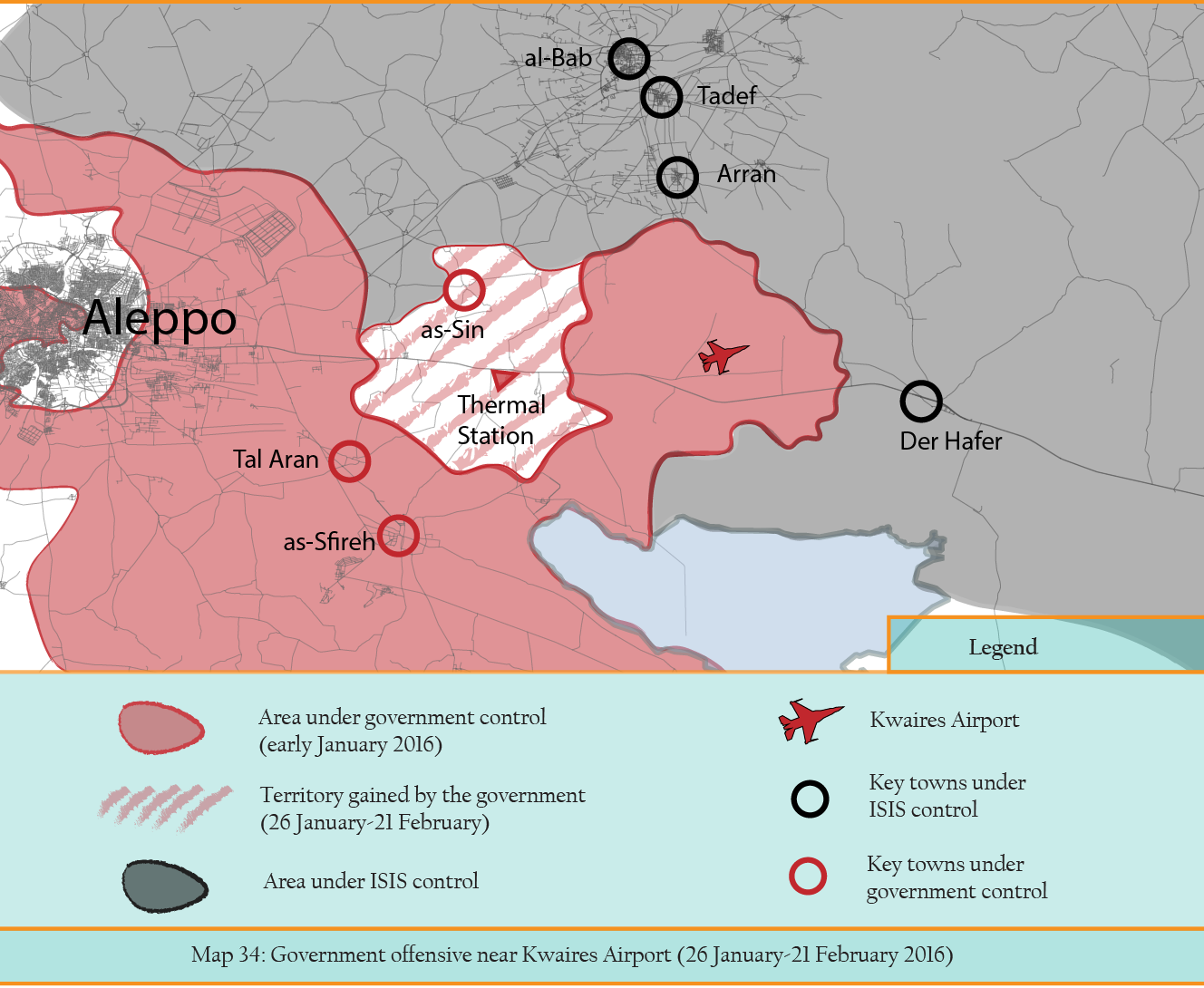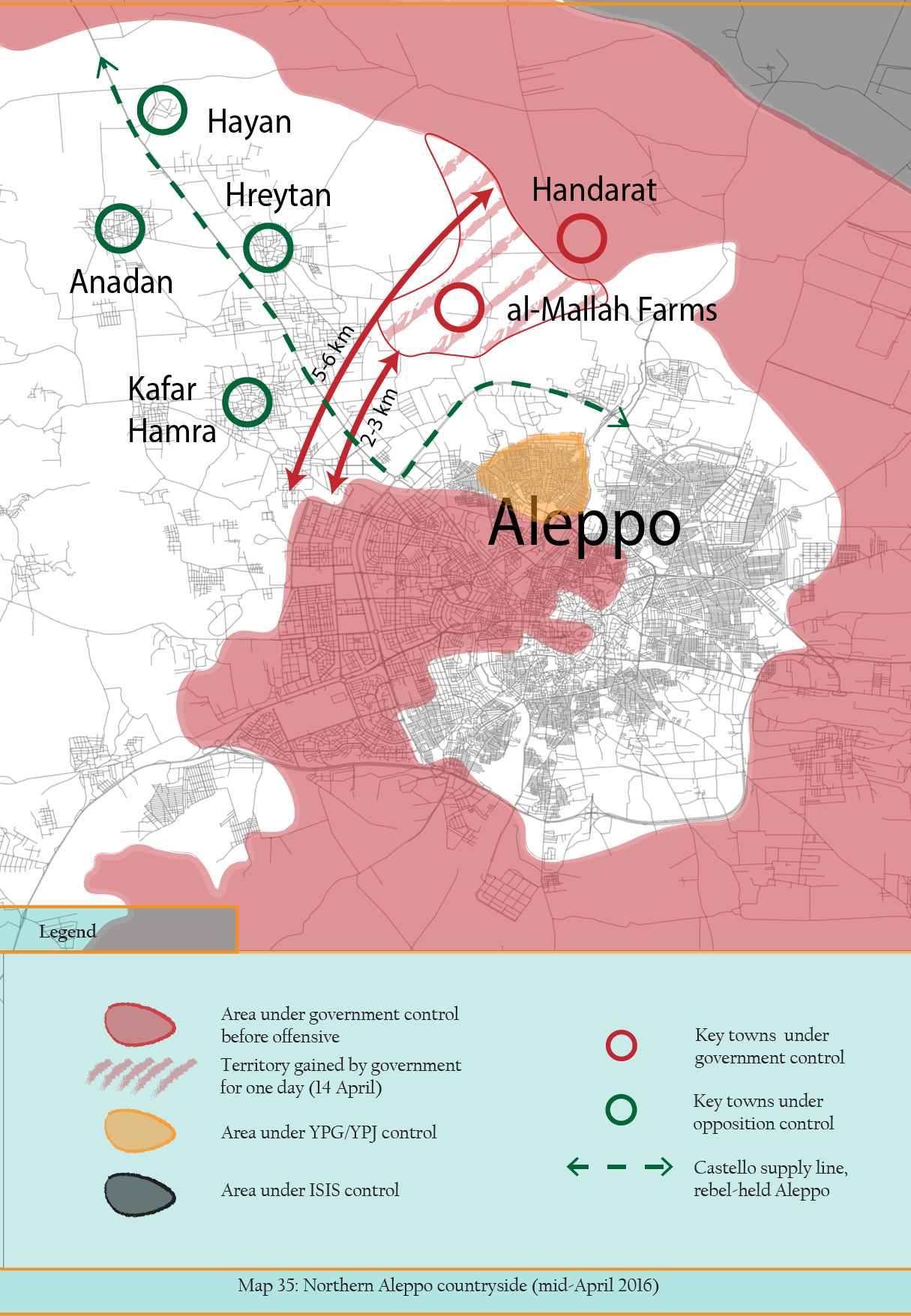When I lived in Syria, I hadn’t even heard about the Janbolad (Junblatt) Palace until 2011, my third year as an archaeology student. I was very surprised that a palace like this existed in my city. I did not expect its beauty, because just a few people even knew the palace’s name and location.
read more2016
All posts from 2016
Aleppo Weekly- June 22- 27
by The Aleppo Project on June 28, 2016A market in the Shaar district shortly before iftar. Click here to watch the video.
Voices from the City
read moreImpact of the Civil War on Aleppo’s Job Market
by Karam Shaar on June 23, 2016Studies of the Syrian civil war have largely focused on topics such as refugees and casualties and have left the crucial topic of employment greatly under-researched. Understanding changes in the composition of the job market will greatly enhance reconstruction efforts in post-war Aleppo as it allows a better understanding of the availability and quality of the labour force.
In late 2014 and early 2015, The Aleppo Project surveyed 1001 Aleppians about many issues.
This paper focuses on the two questionnaire items related to current professions of the respondents and their previous professions. The major findings of this paper include:
- The composition of the job market has pointedly changed due to the conflict
- Unemployment more than doubled due to the conflict. This applies to Aleppians within the city and abroad
- Differences in the rate of unemployment among Aleppians are largely explained by gender, age, education, and the neighbourhood from which the respondents come.
I believe that policymakers in post-war Aleppo will be faced with very high unemployment rates as the returnees with the fewest economic opportunities abroad come to Aleppo first to seek jobs. Ignoring the unemployed might ignite new unrest and could make the process of reintegration and reconciliation harder.
read moreAleppo Weekly- June 13-21
by The Aleppo Project on June 22, 2016Voices from Aleppo
Islam Mardini published a series of recent photographs shot from regime-controlled areas near the frontline.
read moreAleppo Conflict Timeline – May 2016
by The Aleppo Project on June 13, 2016“The dilemma is that in theory Russia and the United States agree that al-Qaeda-linked groups should be excluded from any peace talks. Since 2013, for example, the United States has not been very keen to support Ahrar ash-Sham due to its radical ideology. In practice, however, Ahrar ash-Sham is the largest armed group in Syria and its exclusion would end the peace process. Separating Ahrar ash-Sham or other groups from JN would weaken the opposition because JN is a key fighting forces. It might also create infighting between JN and other groups which would ultimately serve the government’s interests. Russia is aware of these complications and has used this pretext to weaken opposition groups in favor of the government. An agreement between the United States and Russia about how to resolve this dilemma is fundamental to the survival of the ceasefire and continuation of the Geneva process. As of May 2016, this had not yet happened.”
read moreAleppo Weekly- May 31-June 12
by The Aleppo Project on June 13, 2016Agony in Aleppo-inside Syria’s Al-Quds hospital
by The Aleppo Project on June 10, 2016Last week, while the bombing of Aleppo intensified, three brothers went out to play. They ended up at the Al Quds hospital, where a volunteer was filming the doctors at work. Published by Channel 4 News on 8 June.
read moreThe dream of Inanna | a song for Aleppo
by The Aleppo Project on June 9, 201600
One of the greatest Goddesses of Mesopotamian mythology, Inanna’s descent to the underworld, her death and miraculous revival with the help of the Gods, share commonalities with the ongoing tragedy in Aleppo and Syria. When passing the seven gates of the underworld, Inanna was stripped of her clothes, which symbolized her power. Similarly, Aleppo and Syria have been stripped of their economic, political and human power during the past five years. While Inanna made it back to the heavens and was revived with the aid of the Gods, Aleppo and Syria still wait for the resolution of this devastating conflict.
read more
The Aleppo Weekly – May 17 – 30
by The Aleppo Project on May 31, 2016A recent anonymous author’s photo (weekly featured image) of Aleppo’s Clock Tower has been circulating in Syrian social media. The structure, one of Aleppo’s main sites, has endured some damage, especially to the clock part of the tower. Access to the area is restricted as it became at the frontline on the regime controlled side.

Qabas educational organisation in Aleppo takes its students in a “historical tour” around the Old City. They visited, among other sites, Bimaristan an-Nouri – a 12th Century mental institution where patients used to be treated with means that included the sound of water fountains.
World Bank report: Aleppo is the worst hit Syrian city, with housing and energy the most badly affected sectors.
A video from an anonymous French source of Aleppo’s most famous fawwal, or ful cook, Abu Abdo, shows rare footage of the lively interaction between the customers and the renowned fawwal.
Radio Hara FM publishes videos from Old Aleppo in 360 degree imaging
Aleppian programmer invited to participate in the Google I/O 2016 conference in the US was rejected visa, creating sympathy and discontent in Syrian social media. Here’s about his company’s most popular app, Gherbtna (Our Expatriation).
ASOR launches its Cultural Heritage Monitor app for phones and PC. It allows people to report on status quo of sites as well as violations, such as artefact theft.
read moreAleppo Conflict Timeline
by The Aleppo Project on May 17, 2016The Aleppo Project published the “Aleppo Conflict Timeline” – a chronology of the conflict in Aleppo since 2012.
The Aleppo Project Fellow Armenak Tokmajyan studies the development of the armed conflict in Aleppo, the evolution of armed groups and government forces, and their military tactics and strategies. The timeline analyzes the Geneva Peace Process and its implications on the ground. The report also sheds light on the humanitarian situation in the divided city. The extensive report includes 35 original maps designed by the author.
The report will be updated at the beginning of every month.
read more The Aleppo Project
The Aleppo Project






